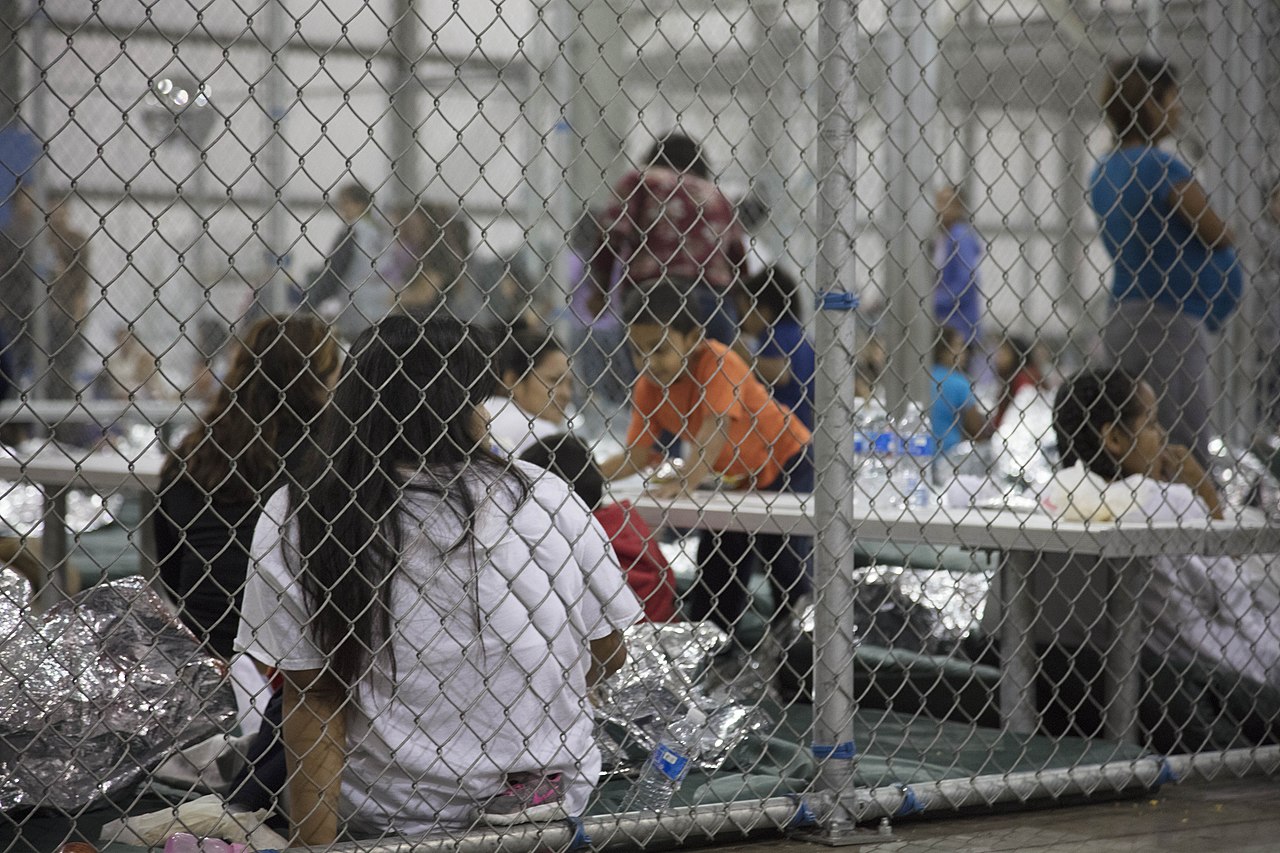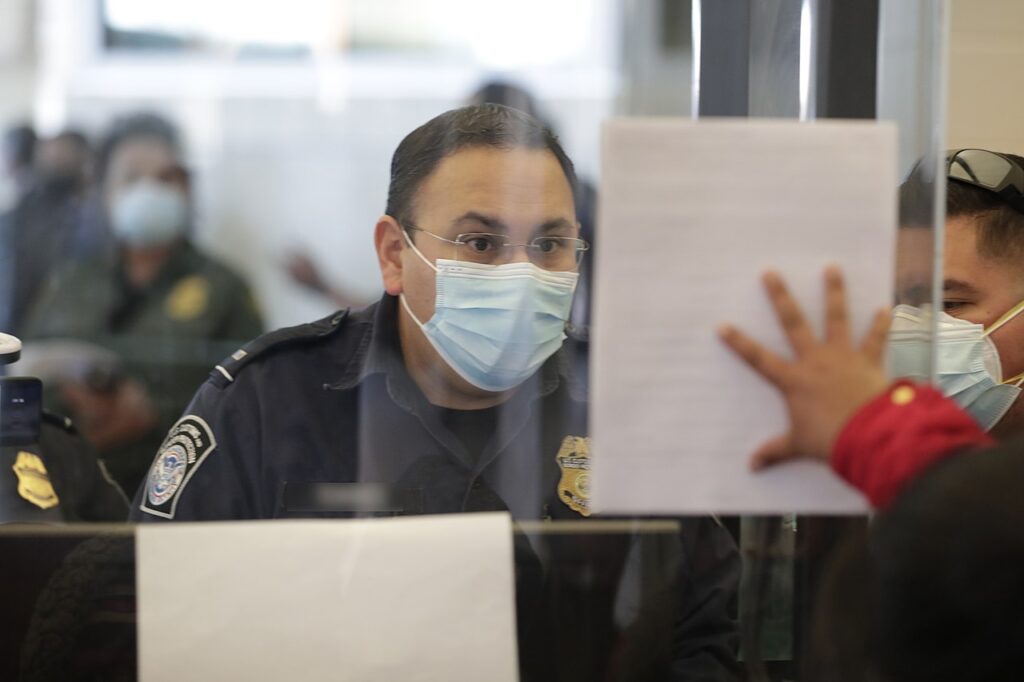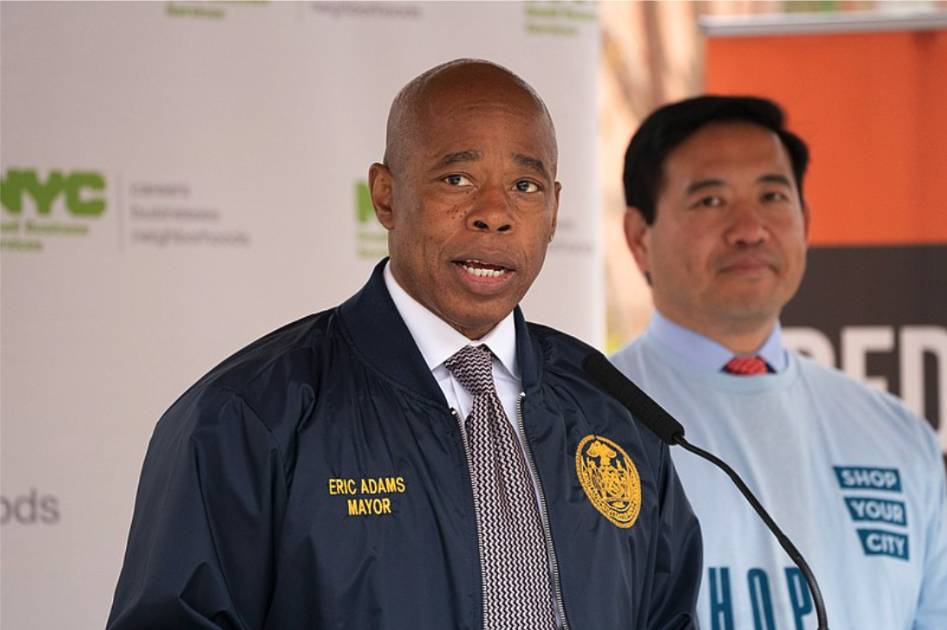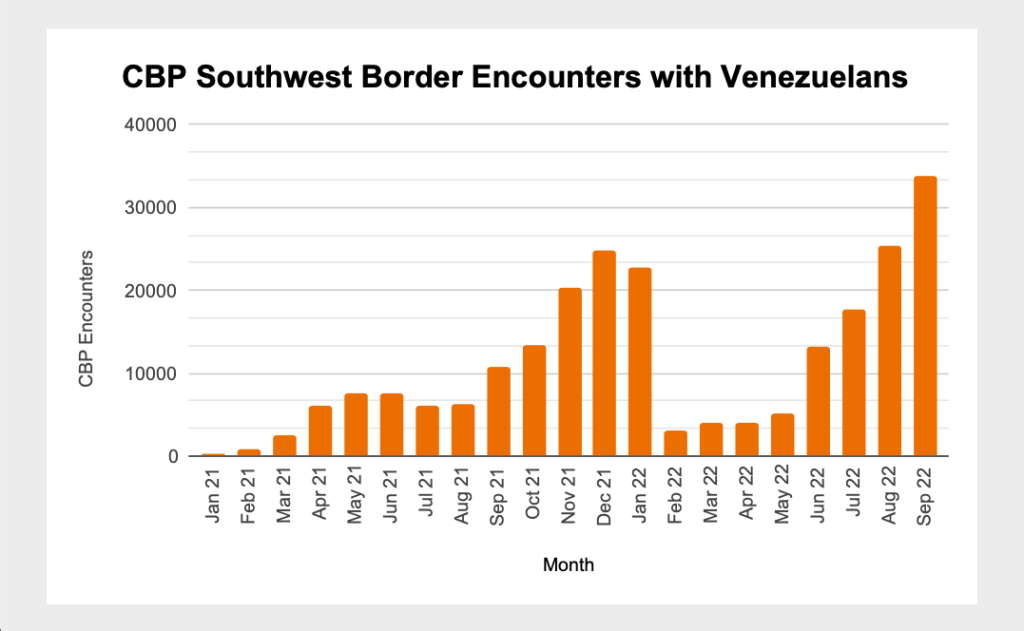IMMIGRATION NEWS BY THE NUMBERS – March 2023
March 31, 2023 – By Ariel Miller

84,216: Number of migrant family units enrolled in Alternatives to Detention programs as of March 11.
On March 6, Biden administration officials said that the administration was weighing whether to return to the practice of holding migrant families in detention facilities when the Title 42 pandemic-related expulsion policy expires on May 11.
Although detention of families was standard practice during the Trump administration and (to a lesser extent) during the Obama and Bush administrations, the Biden administration expanded a program that releases families into the U.S. pending their initial hearings in immigration court. The administration uses ankle bracelets, smartphone apps, and mandatory phone check-ins to monitor released migrants— a suite of programs collectively known as Alternatives to Detention (ATD). Although these programs have existed since 2004, participation in ATD has exploded in recent years: according to TRAC Syracuse, enrollment was 4.5 times higher at its height in December 2022 than it was when ICE’s records began in September 2019. In data released this month, ICE reported that there are currently 84,216 families enrolled in the ATD program, down from a high of 104,167 in January.
Numerous reports have concluded that family detention poses a risk of serious medical and psychological harm to children and families. In 2018, two government medical consultants testified in a letter to the Senate’s Whistleblower Protection Caucus that “there is no amount of programming that can ameliorate the harms created by the very act of confining children to detention centers.”
Irregular border crossings have dropped dramatically in the last few months after the administration expanded Title 42 to include nationals of Venezuela, Nicaragua, Haiti, and Cuba. Between December and February, irregular border crossings fell 97.5 percent. Officials who spoke to The New York Times about the administration’s plans stated that the potential policy shift toward detention is due to concerns that the end of Title 42 will bring a surge of migrants to the border, despite last month’s proposed rule which will crack down on asylum seekers when Title 42 is lifted.
Two-thirds: Portion of unaccompanied migrant children that caseworkers estimate are working full-time jobs after being released to sponsors in the U.S.
Recently The New York Times published a sweeping investigative report that found widespread child labor exploitation of unaccompanied migrant children released from Health and Human Services (HHS) custody to sponsors across the country. HHS case workers interviewed for the story estimated that two-thirds of children released from their care were working full-time jobs.
The Times found that pressure to release children quickly had resulted in failures in the vetting process for sponsors, botched follow-ups, and nearly nonexistent oversight. Among the statistics cited in the article, the Times reported that after releasing children from custody, HHS immediately lost contact with one third of the children it was supposed to reach for follow-up phone calls.
According to HHS, more than 275,000 unaccompanied migrant children have been released to sponsors since October 2020.
700 to 800: Number of appointments available each day through the CBP One app for migrants to claim asylum at ports of entry across the southwest U.S. border.
Since the beginning of the year, the Biden administration has increasingly relied on CBP One, a smartphone app, to help implement its new strategies metering the entry of asylum seekers at the border. Starting in January, the administration began using the app for all of its exemptions to Title 42, and in its proposed rule last month, the administration said it would expel asylum seekers who did not use the app to make an appointment to claim asylum at ports of entry, with limited exemptions.
Data released this month reveals the scope of the first few months of the app’s implementation for asylum seekers, and provides a glimpse at the potential bottleneck when Title 42 expires. On March 16, the government filed a report in court saying that in February, about 742 asylum seekers were able to book appointments each day, up from 706 per day after CBP began using the app for Title 42 exemptions on January 18. Advocates estimate that there are more than 100,000 people currently at the border seeking entry.
The app has faced criticism from advocates and migrants, who argue that it is glitchy and error-prone, and that its facial recognition component is biased against dark-skinned users. Additionally, a recent Washington Post article documented migrants who are struggling to buy smartphones and access WiFi to use the app, all while waiting in vulnerable situations in border towns where they are subject to violence and kidnapping. In one instance, a man fell from the roof of a building while trying to access a stronger WiFi signal to book an appointment, seriously injuring himself. The article also documented a family that earns 20 to 50 pesos per week, or about $1.10 to $2.74 dollars, struggling to pay for a smartphone data plan that costs 100 pesos every two weeks.
On March 28, a fire in a migrant detention facility in Ciudad Juarez, reportedly started by detainees to protest possible deportation, killed 40 men and seriously injured another 29. At least one of the men reported missing after the fire was waiting for an appointment to claim asylum through CBP One when he was detained.
15,000: Number of refugees from the Western Hemisphere that Canada has committed to accept over the next year as part of a deal that will allow them to return asylum seekers who cross into Canada from the U.S.
On March 24, President Biden and Canadian Prime Minister Justin Trudeau announced they had reached a deal that would allow Canada to expel asylum seekers who cross into Canada from the U.S. between official ports of entry. In 2022, a record 40,000 asylum seekers crossed from the U.S. into Canada. In exchange, Canada has agreed to accept 15,000 refugees from the Western Hemisphere in the next year. The move is in line with President Biden’s recent strategies aimed at preventing surges in migration through a combination of harsher restrictions on asylum seekers and more official humanitarian channels for legal immigration.







